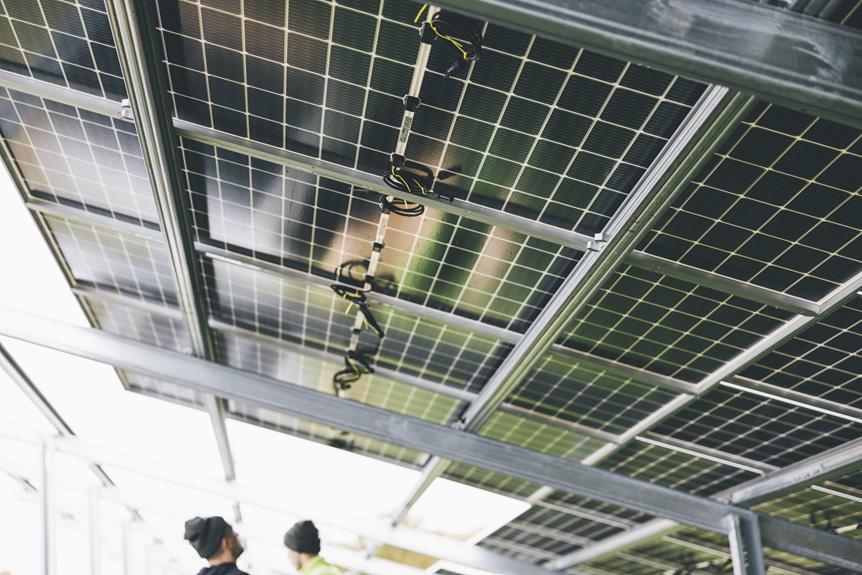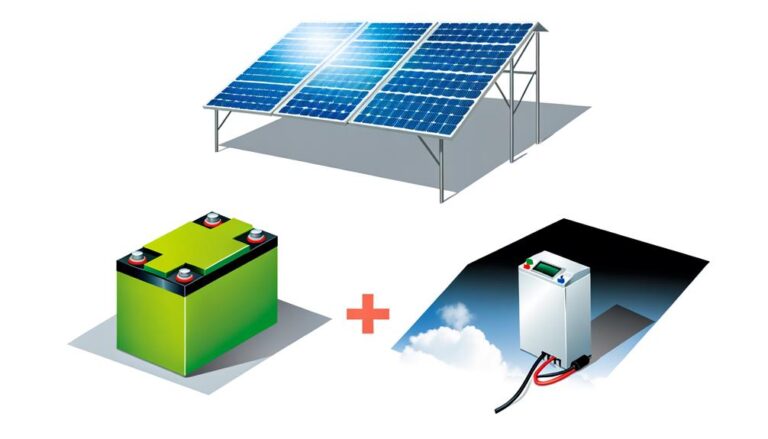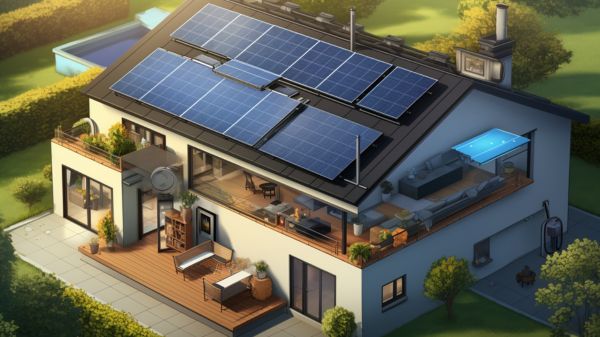What Are the Steps for Installing a Residential Solar Power System?
Looking to harness the power of the sun and reduce your carbon footprint? Curious about the steps involved in installing a residential solar power system? Wonder no more! We’ve got you covered with a comprehensive guide on how to bring clean energy to your home.
From assessing your site to obtaining permits, from installing solar panels to connecting the electrical wiring, we’ll walk you through each step in detail. Start your journey towards a sustainable future today!
Key Takeaways
- Assess solar panel orientation and shading analysis for maximum sunlight exposure
- Obtain necessary permits and approvals, including permits, inspections, and utility approvals
- Install solar panels with proper positioning, secure mounting, and connections
- Test and commission the system for performance, safety, and reliability
Site Assessment and Planning
How do you determine if your site is suitable for a residential solar power system installation?
The first step is to assess the solar panel orientation and shading analysis. Solar panels need to be positioned in a way that maximizes sunlight exposure. The ideal orientation is south-facing, as it receives the most sunlight throughout the day. However, east or west-facing roofs can also work, as long as they receive sufficient sunlight.
Shading analysis is crucial in determining if there are any obstructions that may block sunlight from reaching the panels. Trees, buildings, or other structures can cast shadows and reduce the system’s efficiency. It’s essential to evaluate the shading patterns throughout the year to ensure maximum energy production.
Obtaining Necessary Permits and Approvals
To proceed with the installation of a residential solar power system, you’ll need to obtain the required permits and approvals. This is an important step to ensure that your system meets all safety and building code requirements.
Here are five key items to consider during the permit application and inspection process:
- Submitting a complete permit application: Provide all the necessary documentation, including system plans, electrical diagrams, and equipment specifications.
- Paying the permit fees: The fees vary depending on your location and the size of your system.
- Scheduling inspections: You’ll need to arrange for multiple inspections throughout the installation process, such as electrical, structural, and final inspections.
- Meeting code requirements: Your system must comply with all local, state, and national electrical and building codes.
- Obtaining utility approvals: Coordinate with your utility company to ensure that your system meets their interconnection requirements.
Solar Panel Installation
Start by positioning the solar panels on your roof or other suitable location. When installing solar panels, it’s crucial to consider the angle and orientation for maximum solar panel efficiency. The ideal tilt and direction depend on your geographical location. Ensure that the panels receive maximum sunlight throughout the day.
Once positioned, secure the panels using appropriate mounting brackets and fasteners. Connect the panels in series or parallel, depending on the system design, to ensure optimal performance and solar panel efficiency. It’s essential to follow the manufacturer’s instructions and guidelines during the installation process.
Regular solar panel maintenance is also important to ensure their longevity and performance. This includes cleaning the panels periodically to remove dirt and debris that may reduce their efficiency.
Electrical Wiring and Connection
Now that you have positioned and secured the solar panels, it’s time to focus on the electrical wiring and connection. This step is crucial to ensure the safe and efficient operation of your residential solar power system. Here are some key points to consider:
- Electrical Safety Precautions: Before starting any electrical work, make sure to turn off the main power supply and wear appropriate safety gear, such as gloves and goggles. It’s also essential to follow local electrical codes and regulations.
- Solar Power Grid Integration: To connect your solar panels to the grid, you’ll need to install a solar inverter. This device converts the DC power generated by the panels into AC power that can be used in your home or fed back into the grid.
- Proper Wiring Connections: Use appropriate cables and connectors to connect the solar panels to the inverter. Ensure that all connections are secure and properly insulated to prevent any electrical hazards.
- Grounding: Proper grounding of the system is crucial for safety. Consult with a qualified electrician to ensure that your solar power system is properly grounded according to local regulations.
- Testing and Inspection: Once the wiring and connections are complete, it’s important to test the system and have it inspected by a qualified professional to ensure it meets all safety and performance standards.
System Testing and Commissioning
Once the wiring and connections have been completed and the system has been inspected, it is time to test and commission your residential solar power system. This step ensures that your system is functioning properly and ready to generate clean energy for your home. System testing involves checking the performance of various components and ensuring that they are working together seamlessly. The table below outlines the key steps involved in testing and commissioning your residential solar power system:
| Step | Description |
|---|---|
| Performance Testing | Verify that the system is producing the expected amount of electricity based on design specifications. |
| Safety Testing | Ensure that all safety mechanisms are in place and functioning correctly to protect both people and property. |
| Troubleshooting | Identify and resolve any issues or malfunctions within the system to optimize performance. |
| Maintenance Planning | Develop a maintenance plan to ensure the long-term reliability and efficiency of the system. |
System performance, troubleshooting, and maintenance are critical aspects of ensuring the success of your residential solar power system. By thoroughly testing and commissioning your system, you can have confidence in its ability to generate clean energy and contribute to a sustainable future.
Conclusion
Congratulations! You have successfully navigated the intricate process of installing a residential solar power system. Just like a skilled architect constructing a masterpiece, you have meticulously assessed the site, obtained the necessary permits, installed the solar panels, wired everything expertly, and tested the system to perfection.
Now, bask in the abundant energy your home will generate, like a blossoming garden flourishing under the warm rays of the sun. Your dedication to sustainability is admirable.





